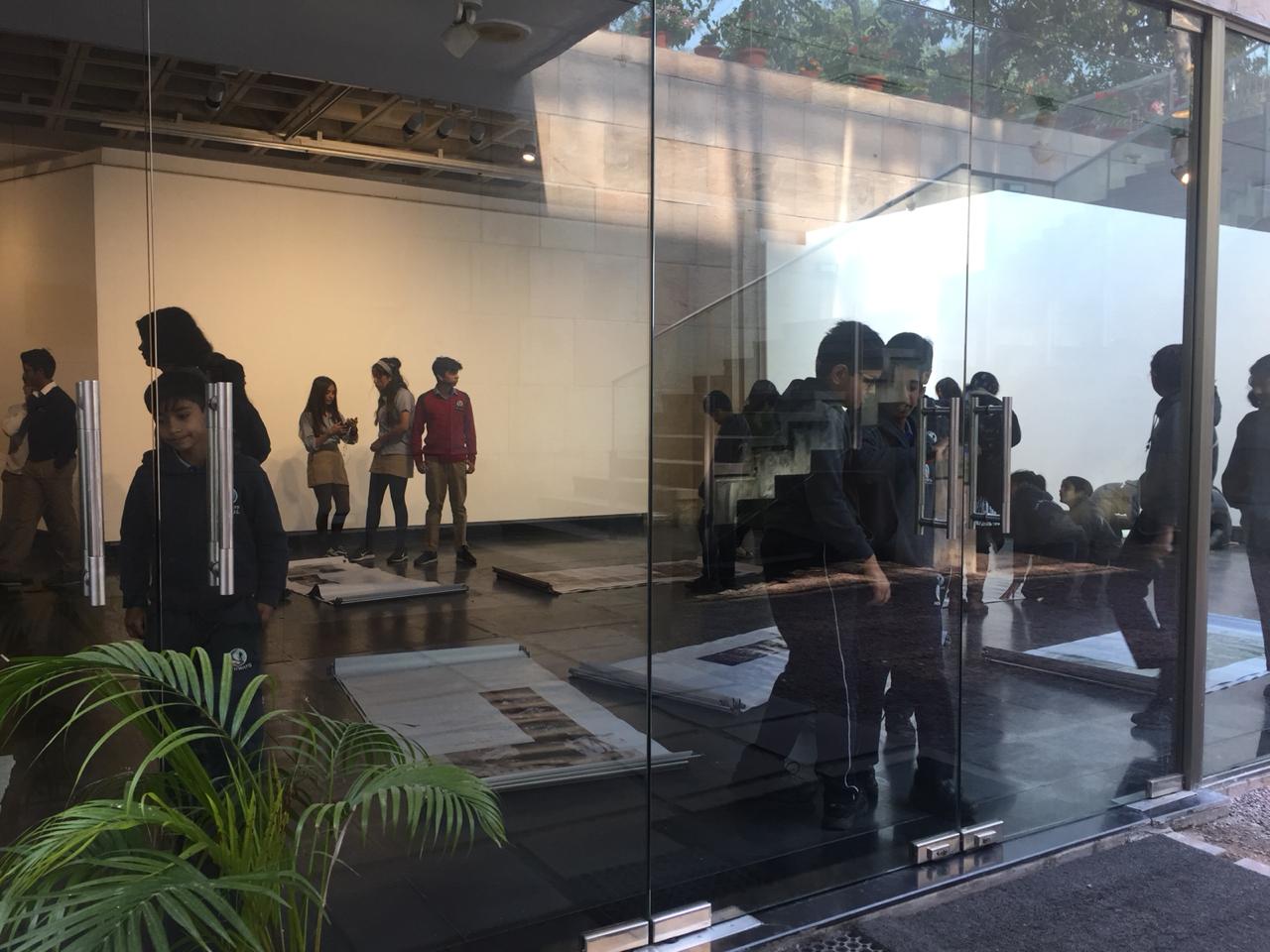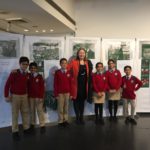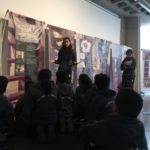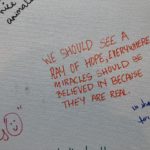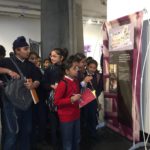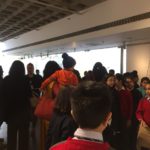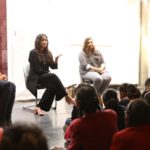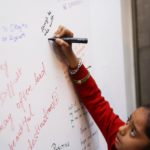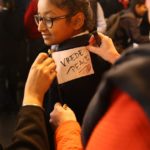In the past, I had often wondered how schoolteachers teach the same subject, the same syllabus, the same topics out of the same textbooks—year in and year out! It must take great ingenuity and creativity to not fall into the trap of monotony.
ccccThe understanding of how this works has come to me through the Anne Frank – A History for Today project. Six years, 19 destinations and interacting with over 500 students through the peer guide training workshop has grounded me in the belief that working with the young can be many different things, but it can never ever be monotonous—whether you are dealing with the same subject or not.
ccccOn the cold Delhi morning of 25 February 2019 I headed to the Alliance Française Gallery, all set confidently to spend a day and a half engaging with a group of 30 students in order to train them to become peer guides for the Anne Frank exhibition. The participants were to be from Pathways(Gurgaon), Pathways(Noida) and Amity International School. Moments after reaching the destination my confidence was blown to smithereens, leaving me on the brink of panic.
ccccThe group of students was there—waiting, chattering away excitedly, eager. But out of the group of 30, 18 were 10 and 12 year olds! The rest were from high school, so 15-16 year olds, the age group we normally work with for this training. I felt at a complete loss. How was I to conduct a workshop meant to train students to become guides to an exhibition that depicts Anne’s tragic life story in the backdrop of all the evils of the Holocaust, with 10 and 12 year olds? How much would they comprehend, how much would they understand, how much would they be able to deal with, how much do they know—these were the questions I was grappling with.
ccccNonetheless, we began, with an ice breaking exercise where all participants were to introduce themselves with their name and one thing they like and one thing they do not like. This worked well with some of the participants being funny, some being candid, some shy—all enthusiastic about sharing their one like and one dislike. Five students in the group said ‘I hate . . .’ instead of ‘I don’t like . . .’. I flagged this in my head to come back to in the course of discussions as soon as the opportunity came up.
ccccIntroductions done, we moved to Circle Time to discover how much knowledge the group possessed in relation to The Diary of Anne Frank, the Second World War and the Holocaust. There was much sharing of responses to Anne’s diary, which more than half the group had read. The icebreaker had laid the ground for a discussion on Identity—the various aspects that constitute ‘identity’, which very naturally flowed towards a debate on the importance of race, community and religious identity.
cccHaving established the context and the concepts, it was time to begin the physical work of setting up the exhibition. When I first discovered the age of the participants, I was only concerned about the level at which the discussions and training could happen. As it turned out, that was the easy part. With the younger ones I focused on Anne’s life, her story, which they could connect to by the fact of being nearly the same age. With the older students I covered everything from the causes leading up to the Second World War to the rise of Hitler to the events that unfolded to concepts of justice, violations, evil, the capacity of the human mind to go to unimaginable lengths in support of their ideology. The real difficulties were with the actual setting up of the panels—this requires a certain degree of physical strength, which was unreasonable to expect from the younger lot. Hence this part of the workshop took much longer than expected and by the time we had set all the panels up and in place, it was time to end the workshop for the day.
ccccThe second day of the workshop began with the screening of the film The Short Life of Anne Frank. The film brilliantly captures all the content on the exhibition panels and this moving visual narrative did all the work of familiarizing the students with the content. The discussion that followed led to the breaking of my own mindset regarding the ‘right’ age for a certain level of understanding. I got the opportunity I was looking for to debate the ease with which we tend to use the word ‘hate’ in our daily lives and what ‘hate’ can actually lead to. All the students had amazing insights to contribute. My initial reservations were dispelled and we plunged into simulations of the guiding process.
ccccWednesday, 27 February, the official opening at 10.30 a.m. saw heightened excitement amongst the group of peer guides—all ready to greet their visitors and proudly guide them through the exhibition. The opening saw over 200 students and teachers and the programme included a speech by Anneke Adema, DCM Netherlands Embassy, Priyanka Chaudhary Raina (public figure), Avigail Spira, Spokesperson Israeli Embassy, followed by school students writing their peace messages on white flags which were symbolically used to officially open the exhibition.
ccccOver the next few days, hundreds of visitors are expected at the exhibition and the peer guides are ready to share one of the most tragic stories of this century and discuss why it is important and relevant to keep Anne’s legacy alive.
-Megha

